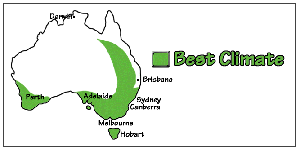Autumn colour is a wonderful sight, yet many associate this season’s colour with changes in tree foliage. Flowering plants do make an impact with autumn colour and Peter Valder recently looked at some autumn flowering bulbs which were named after Nereis, a sea nymph from Greek mythology.
Details
Common name: Nerine
Botanical name: Nerine spp.
Description: These autumn flowering bulbs produce their flower stems before the leaves, similar to belladonna lilies to which nerines are closely related. The plant dies down to ground level and the bulb becomes dormant.
Nerines can grow to 60cm (24″) with a width of 30cm (12″). The foliage is strap-like and the flowers have narrow petals which curve outwards. They come in a variety of colours including pink, red and white.
The nerines featured in the segment include:
- Nerine flexuosa ‘Alba’- a white flowering nerine which is very adaptable as it will flower in both full sun or in heavy shade. It does require a cool climate as hot summer nights will stop the flower stems from being produced.
- Grass-leaved nerine (Nerine filifolia) – slender grass-like foliage and masses of spidery pink flowers.
- Nerine pudica – this is a taller variety which has graceful white flowers with a blush pink stripe on the inside.
- Guernsey Lily (Nerine sarniensis) – this nerine has either brilliant red or brilliant orange flowers. According to Peter Valder, this one really sparkles.
- Pink Spider Lily (Nerine bowdenii) – perhaps the best known nerine, this species has flowers with ruffled edges which appear before its foliage in autumn – similar to the belladonna lilies to which nerines are related. This is the hardiest of all nerines and withstands heavy frost.
Uses:
- potted indoor colour
- autumn garden feature plant
- rockery planting
Likes:
- full sun
- well drained soil
- plenty of water during growth period
Dislikes:
- severe frost
- areas of high summer rainfall
Climate: These bulbs originate in South Africa. South Africa’s climate is similar to that of the southern part of Australia and the bulbs are therefore well adapted. Nerines like mediterranean climates, mountain areas and the cooler south-eastern Australian climates.
Availability: Nerine bulbs are available at nurseries now. Potted nerines should be available throughout the year. Our segment was filmed at Merry Garth in the Blue Mountains of NSW, and the attached nursery sells potted nerines for $5 in either 150mm (6″) or 200mm (8″) pots.
You can also buy loose nerine bulbs. Tesselaar Bulbs and Flowers have a range of nerines which will give garden colour from late summer and into winter. The bulbs range in price from $3-$5 depending on the species. Write, phone or fax Tesselaar’s for their free catalogue.
Tesselaar Bulbs and Flowers
357 Monbulk Road
Silvan, VIC, 3795
Phone: (03) 9737 9811 or fax: (03) 9737 9706.



